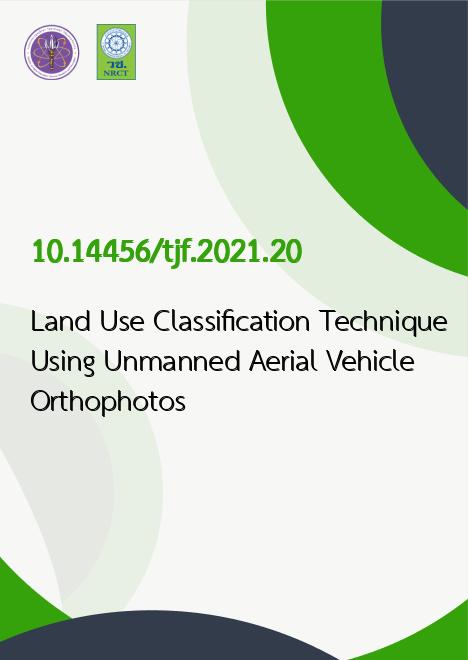
|
Land Use Classification Technique Using Unmanned Aerial Vehicle Orthophotos |
|---|---|
| รหัสดีโอไอ | |
| Creator | Kraiwut Siri-on |
| Title | Land Use Classification Technique Using Unmanned Aerial Vehicle Orthophotos |
| Contributor | Piyawat Diloksumpun, Weeraphart Khunrattanasiri |
| Publisher | Kasetsart University |
| Publication Year | 2564 |
| Journal Title | Thai Journal of Forestry |
| Journal Vol. | 40 |
| Journal No. | 2 |
| Page no. | 95-110 |
| Keyword | Unmanned aerial vehicle, Land use classification, National reserved forest, Pixel-based classification, Object-based classification |
| URL Website | https://li01.tci-thaijo.org/index.php/tjf/article/view/249908 |
| Website title | Thai Journal of Forestry |
| ISSN | 2730-2180 |
| Abstract | Unmanned Aerial Vehicle (UAV) can currently take high-resolution orthophotos but the camera sensor only has an RGB band. Classifying land use using UAV aerial photos through computer needs suitable techniques. The objective of this research was to find suitable techniques for such land use classification. Pixel and object-based classification techniques were applied and validated using visual interpretation techniques. The study area was in the Ban Pa Not, Mae Tha subdistrict, Mae On district, Chiang Mai province, in a total area of approximately 1,182.47 rai, with some parts in the Pa Khun Mae Tha National Reserved Forest. We found that pixel-based classification techniques have an overall accuracy of 39.4% with a Kappa coefficient of 0.27, while object-based classification technique has an overall accuracy of 34.2% with a Kappa coefficient of 0.22. Pixel-based classification techniques gave a slightly higher value but both techniques had an acceptable level of performance as indicated by the Kappa coefficient values on the Landis and Koch scale. We conclude that orthophotos in the RGB band obtained from UAVs are not suitable for land use classification and it is nescessary to find additional techniques to validate such classifications. |